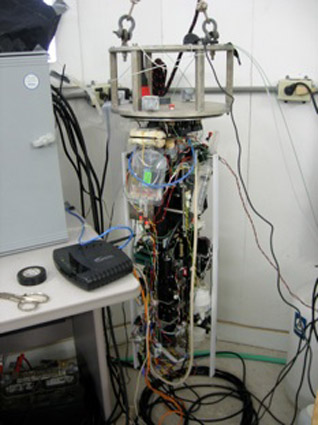A high-tech sentry is keeping an eye on the Texas coast, providing an early warning of dangerous invaders. And it may already have saved lives.
The sentry is known as the Imaging Flow Cytobot. Its quarry are microscopic organisms, known as phytoplankton, that cause red tides and other harmful outbreaks. They produce toxins that can kill the fish that eat them. The toxins can also build up in the bodies of oysters and other shellfish, making them harmful to anything that eats them -- including people.
 The Imaging FlowCytobot in the pier laboratory at the University of Texas Marine Science Institute. Credit: Dr. Lisa Campbell, Department of Oceanography Texas A&M University
The Imaging FlowCytobot in the pier laboratory at the University of Texas Marine Science Institute. Credit: Dr. Lisa Campbell, Department of Oceanography Texas A&M UniversityTexas A&M University researcher Lisa Campbell operates the cytobot, which is on a pier at the University of Texas Marine Science Institute in Port Aransas. The pier is along a ship channel that opens into bays that are protected by barrier islands. That makes the channel a port of entry for invading phytoplankton.
The cytobot funnels seawater from the channel into a microscope. A laser zaps the water, causing phytoplankton in the water to glow. The glow triggers a camera, which photographs the organisms. The images are transmitted to Campbell’s lab for analysis.
The cytobot was intended to look for a particular type of phytoplankton that causes red tides. But in early 2008, just months after it entered operation, it detected another harmful species that hadn’t been seen along the Texas coast. State officials quickly closed the local oyster beds, potentially saving lives.
The cytobot operates around the clock, keeping a constant lookout for tiny but dangerous invaders.
This program was made possible by Texas Sea Grant.

